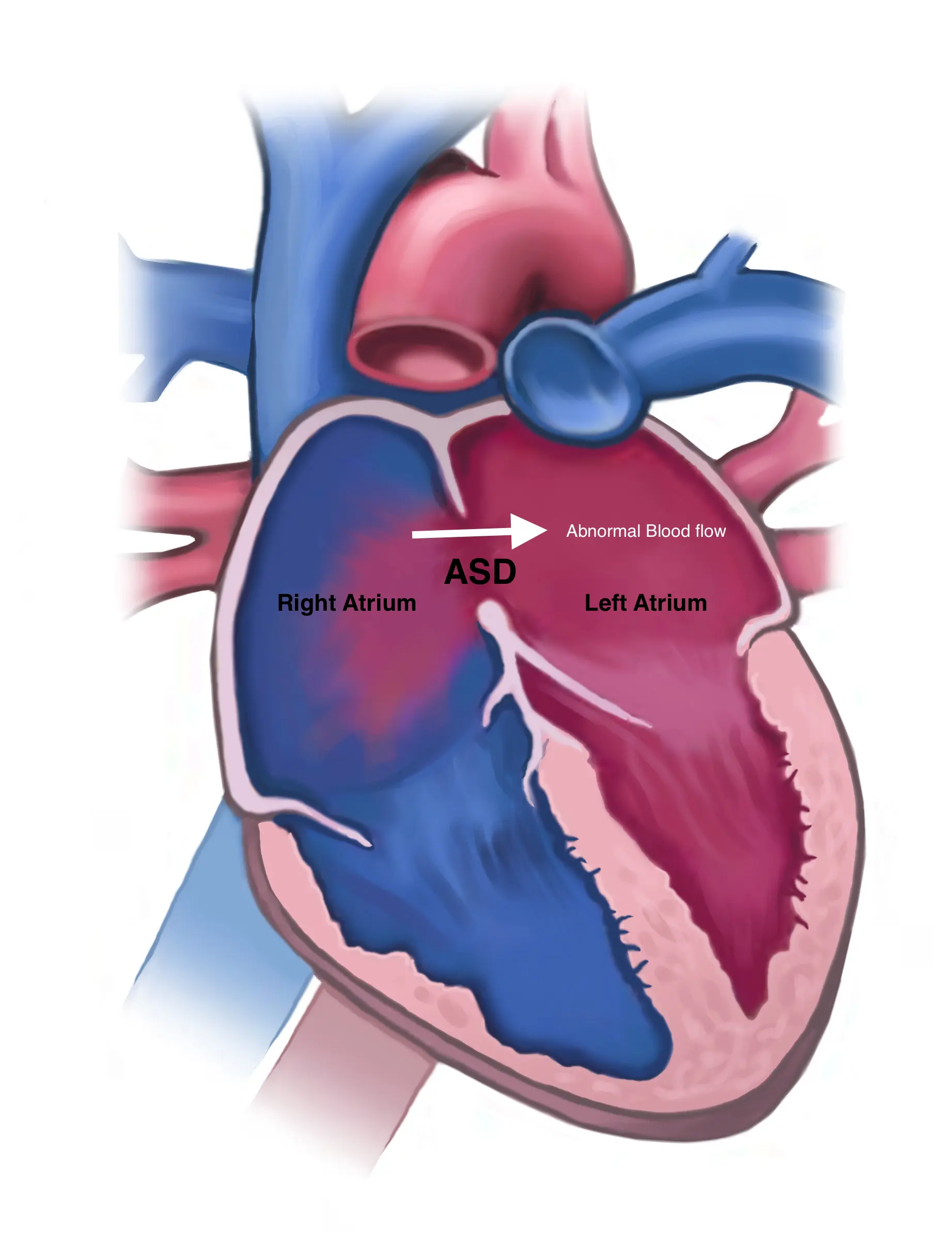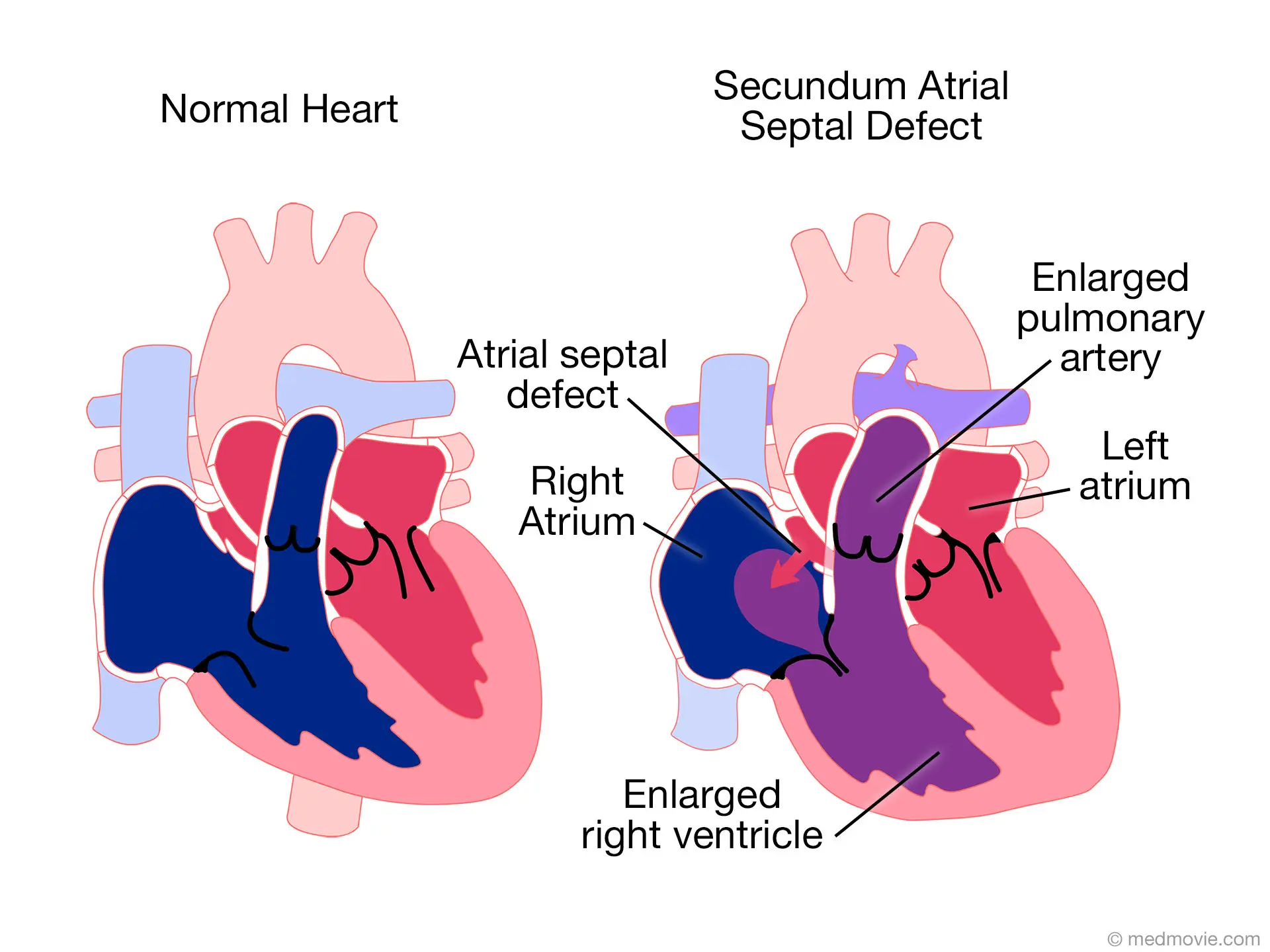Can Atrial Septal Defect be Cured?
Sometimes
Treatment depends on the size of the defect and the presence of symptoms; smaller defects may close on their own, while larger ones may require intervention for closure or repair

What is Atrial Septal Defect?
Atrial septal defect (ASD) is a congenital heart defect where there is a hole in the wall (septum) between the heart’s atria. ASDs can vary in size, and treatment may involve monitoring, medications, or surgical closure.

Clinical Aspects

Characteristics
Congenital heart defect where there is a hole in the wall between the two upper chambers of the heart

Symptoms
Fatigue, shortness of breath, heart palpitations

Diagnosis
Echocardiography, cardiac catheterization, imaging studies

Prognosis
Generally good with appropriate treatment

Complications
Heart failure, pulmonary hypertension, complications affecting multiple organs
Etiology and Treatment

Causes
Genetic and environmental factors

Treatments
Observation, closure using devices or surgical intervention

Prevention
Observation, closure using devices or surgical intervention
Public Health and Patient Perspectives

Epidemiology
Congenital heart defect involving a hole in the wall between the atria

Patient Perspectives
Surgical closure if needed, monitoring for long-term complications
For personalized advice and care, always seek the assistance of healthcare professionals. This information is meant for general understanding and not as a replacement for professional medical advice.
Share: